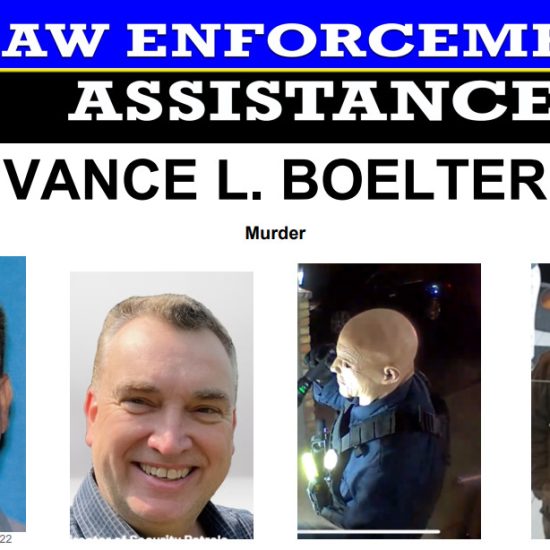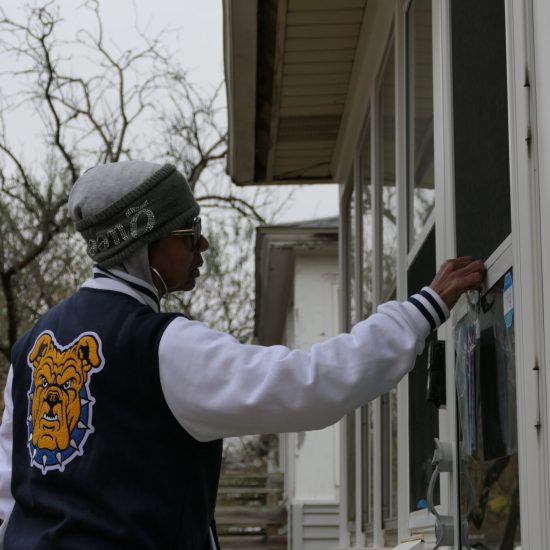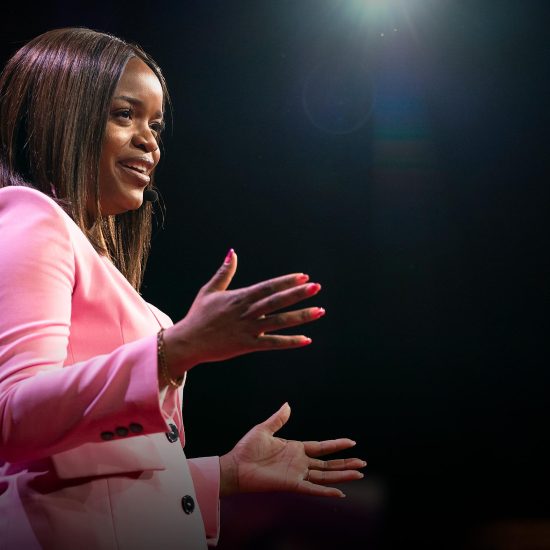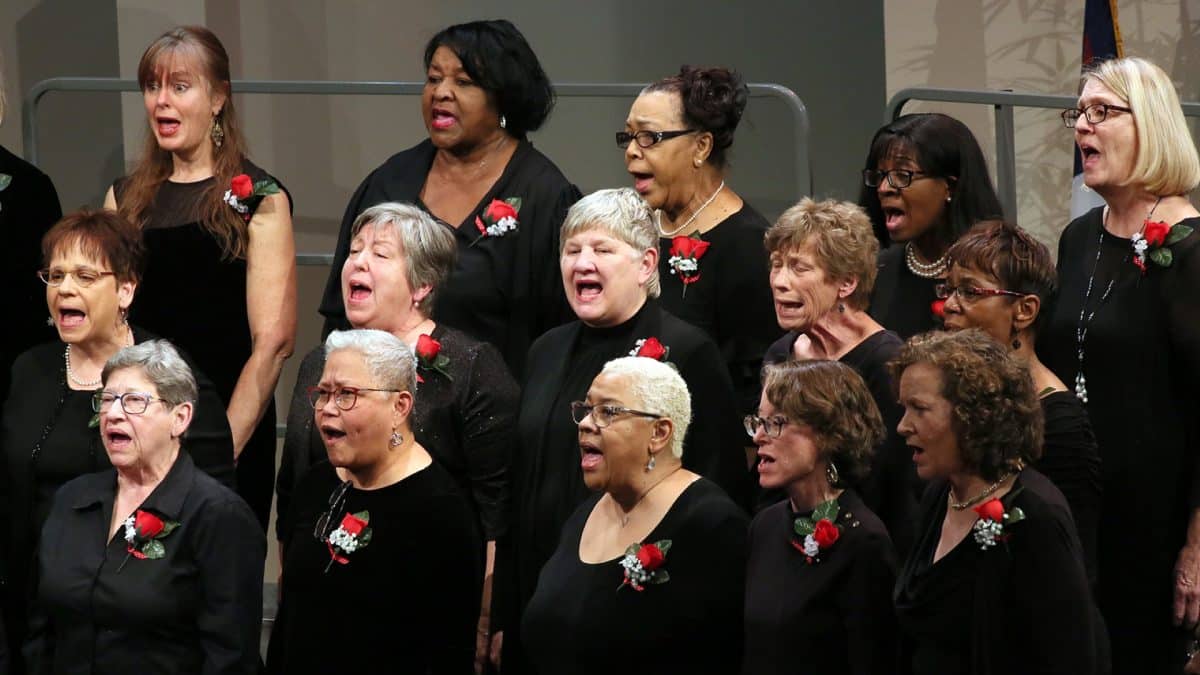
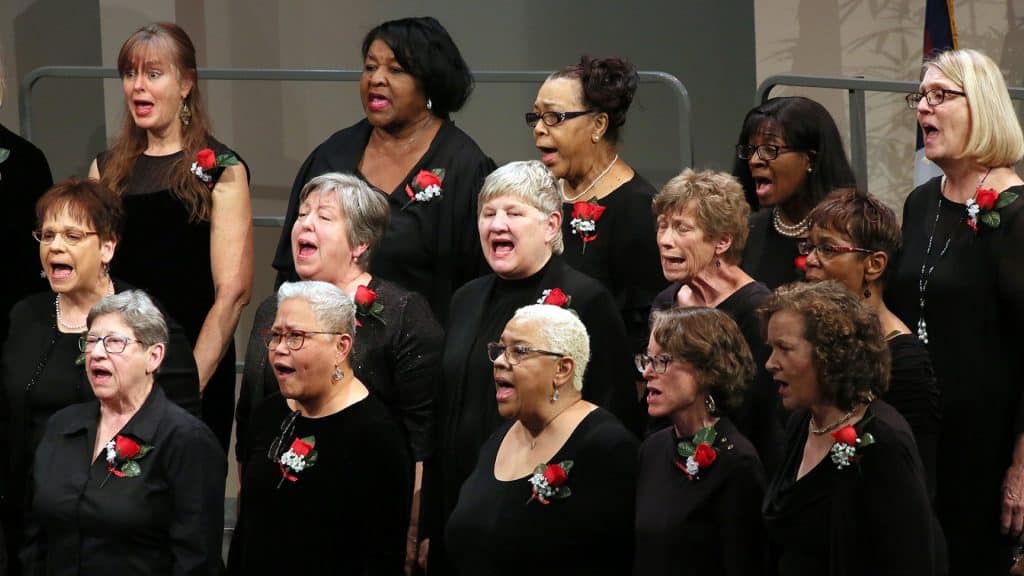
The Community Gospel Choir of St. Louis performs on March 15, 2019, in St. Louis, Mo. RNS photo by Bill Motchan
ST. LOUIS (RNS) — Emi Belciak teaches third grade in a tough part of suburban St. Louis, where she says her students are exposed to more violence than any child should be.
The school where Belciak teaches is just three miles from the site in Ferguson, Mo., where Michael Brown was killed. Five years have passed, but this part of north St. Louis County hasn’t completely healed.
Belciak wanted to do something to help — so she joined a choir.
The Community Gospel Choir of St. Louis is dedicated to bridging the black and white communities in a metropolitan area rarely associated with racial harmony. The diverse group aims to break down racial, cultural and economic barriers among its members and the community.
The 75-member choir opens its Monday night rehearsals with group prayer. Next, the choir preps for an upcoming performance or refines a new song. The idea is to get the lyrics and music memorized so the choir can improvise in front of an audience, just like a jazz or blues musician would.
At the core of the repertoire are message songs, about gathering inner strength in the face of adversity. Typical are the rousing “Call on the Lord” and “Now I’m on My Way.”
The choir is 40 percent black and 60 percent white, unlike many choirs that are either all white or all black. CGC members often socialize outside of official choir activities, say group members. They go out to eat and sometimes belt out a rock anthem together at a karaoke bar.
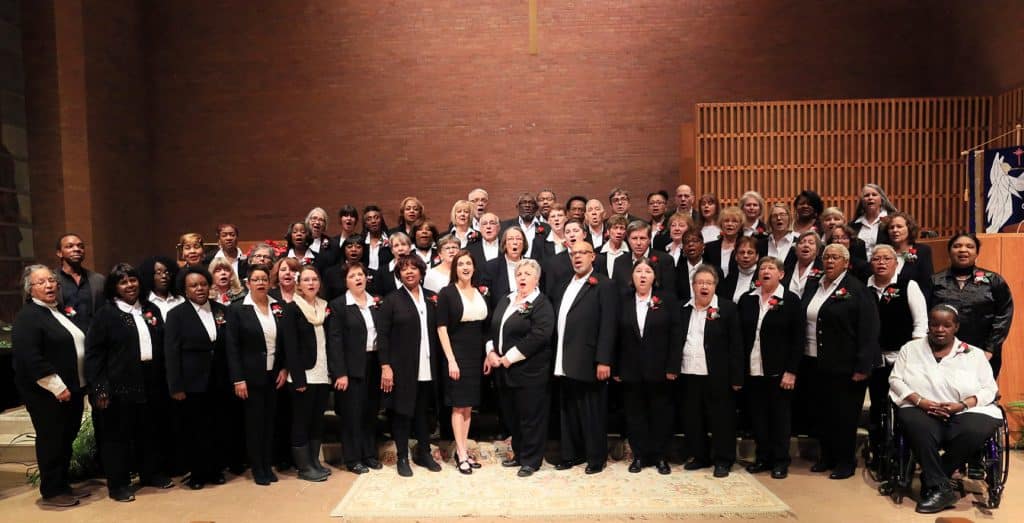
The Community Gospel Choir of St. Louis. RNS photo by Bill Motchan
Most are Christian. For them, singing gospel music is a religious experience.
“What really attracted me was the choir’s endeavor to bring races together through African-American spirituals and gospel,” said Suzanne Palmer, the group’s musical director. “I thought, this is great, to try and bring the races together through the good news of Jesus. I thought, wow, that’s probably for me.”
As part of its mission, the group also tries to collaborate with other choral groups of different backgrounds. An early March concert matched the CGC with the New Sunny Mount Baptist Chancel Choir (which drew a primarily black audience) and the Ambassadors of Harmony, a barbershop-quartet-style group with a mostly white fan base.
The CGC is open to all comers, said Tom Ptacek, CGC president. It had a Reform Jewish rabbi member at one time in its 12-year history and currently has at least two LGBTQ members.
“We’d accept a Muslim member. We don’t have any — yet,” said Ptacek. “We need to get some Hispanic members in the choir, too. We are diverse by race, economics and geography. We made a conscious decision to include people from different economic backgrounds to be part of the choir.”
Up the Mississippi River a bit from St. Louis, the Twin Cities Community Gospel Choir in Minnesota has a similar mission. It seeks to bridge communities across racial, cultural and economic divides through its soulful interpretation of African-American gospel music.
The Twin Cities choir is now in its 26th year.
Founder Robert Robinson started the choir at Metropolitan State University to create a diverse community on campus, said Laura Tueting Nelson, TCCGC president.
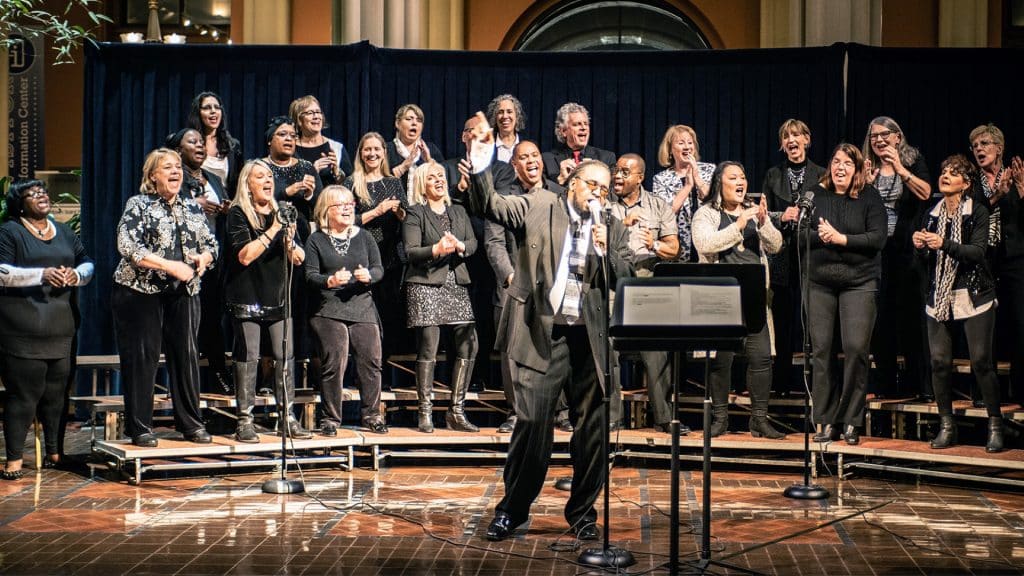
The Twin Cities Community Gospel Choir, led by artistic director Ed Newman, center, is in its 26th year. Photo courtesy of TCCGC
“Minnesota has a large chorale tradition, and interestingly enough, Scandinavians initially showed up to sing in the choir, so it started out being a lot of white people,” Tueting Nelson said. “Then Robert brought in more people of color and he started this group singing. Most of the Scandinavian white folks did not have any experience singing gospel music so he started from the beginning.”
That meant they didn’t sing from scores, but rather followed the oral tradition of listening to how to sing the music properly and repeating it.
“From the beginning, it was teaching people about the tradition and the impact of gospel music,” Tueting Nelson said. “They sang throughout the community and were quite successful.”
The Twin Cities choir focuses on the cultural and artistic aspects of gospel music, rather than seeing it as a religious experience.
“People from any background can participate and learn something about what this music meant historically as well as where it’s going today since there’s a lot of new music being written,” Tueting Nelson said. “We include an oral talking history of gospel music and a whole capsule about this American music that led into blues and jazz and uniquely American forms of music.”
The TCCGC is 20 percent black, representative of its community’s diversity. The group rehearses weekly, like its St. Louis counterpart.
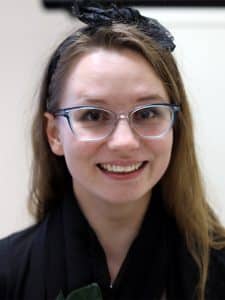
Emi Belciak sings with the Community Gospel Choir of St. Louis. RNS photo by Bill Motchan
“It’s impressive to me that people are willing to give every Thursday of their lives, as well as performance dates, to sing with this choir,” said Tueting Nelson. “Anyone can join; you don’t have to go through a tryout. We assume they’ll be able to carry a tune.”
Back in St. Louis, Belciak says being part of the gospel choir has been “therapeutic.” She’s always loved singing and said that getting to know choir members has allowed her to meet people from different walks of life and to hear their stories.
It’s a small step toward building a stronger community.
“I’m definitely supportive of the mission of the choir,” Belciak said. “Seeing the kind of violence that my kids are exposed to and how it affects their self-esteem, I like to think I’m making a difference and playing a part in the solution.”



